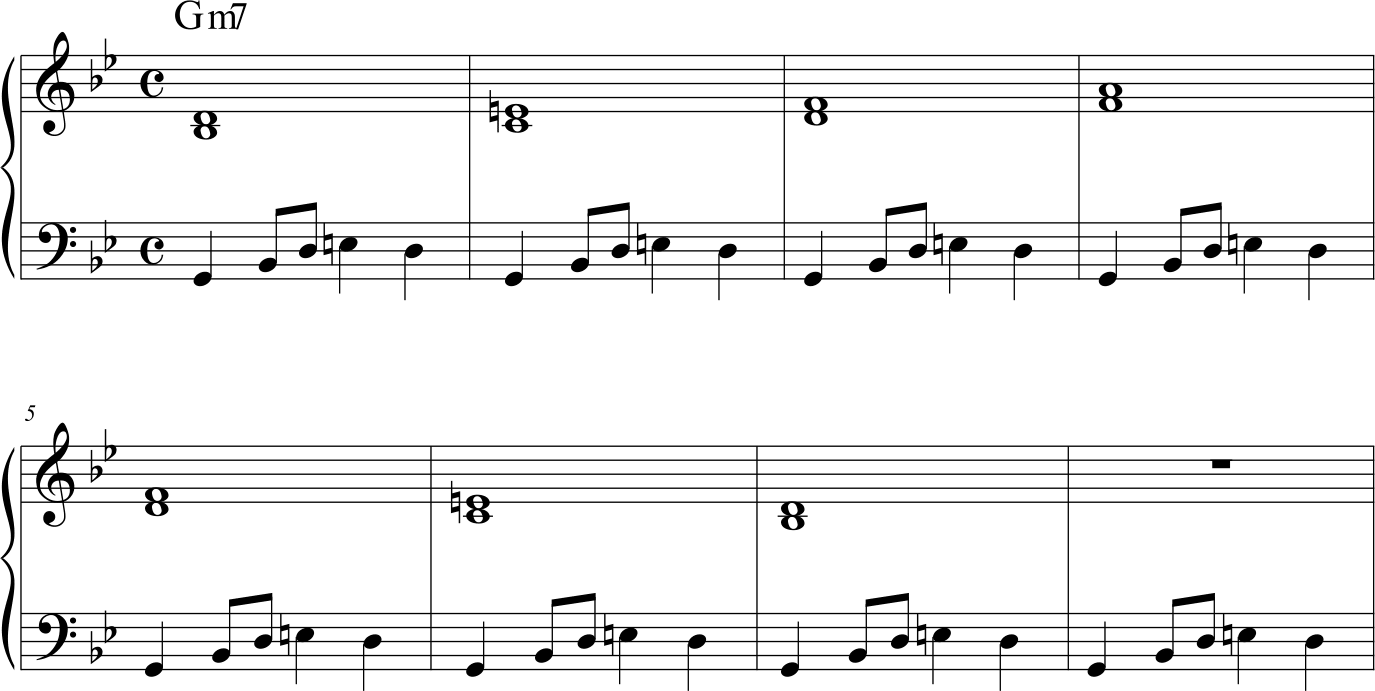[Monday Notes No 37] Autumn Leaves entered the jazz repertoire rather late, the original French version dates from 1946, while the English version became established in the mid-1950s. In this respect, Autumn Leaves is a young standard, in fact most of the jazz repertoire dates back to at least the 1940s, if not earlier.
The song has a classic AABA form and a simple but effective harmony. The piece opens with a long modal introduction on a single Gm7 chord and the Doric G scale. The E♭ present in the key is in fact regularly cancelled by the (♮) mark both in the pedal played by the piano and the bass, and in the notes of the woodwinds; the resulting scale is / a Doric minor scale.

After the introduction, Miles Davis lays out the theme with the long, suspended notes that characterise his style (0’52”). This is followed by solos by Cannonball Adderley (2’04”), Miles (4’20”) and Hank Jones (6’40”). The pianist favours the central register of the instrument and pplays open phrases of great simplicity and beauty. After the reprise of the theme (7’45”) it is again the pianist who improvises, on a final pedal similar to the intro (8’59”).
The development of the piece is rather unusual from a dynamic point of view: instead of increasing in intensity, the solos are played progressively softer and softer, until the coda which is even more quiet and rarefied.
| 1st solo | 2’04” | sax | f |
| 2nd solo | 4’20” | trumpet | mf |
| 3rd solo | 6’40” | piano | mp |
| coda | 8’59” | piano/trumpet | p |
This is a masterful performance in which the notes are as delicate and gentle as the leaves that in Johnny Mercer’s English text fall, swirling, out of the window.
Until next Monday!
This track is part of the list How to learn 100 jazz standards and of the Jazz improvisation course


